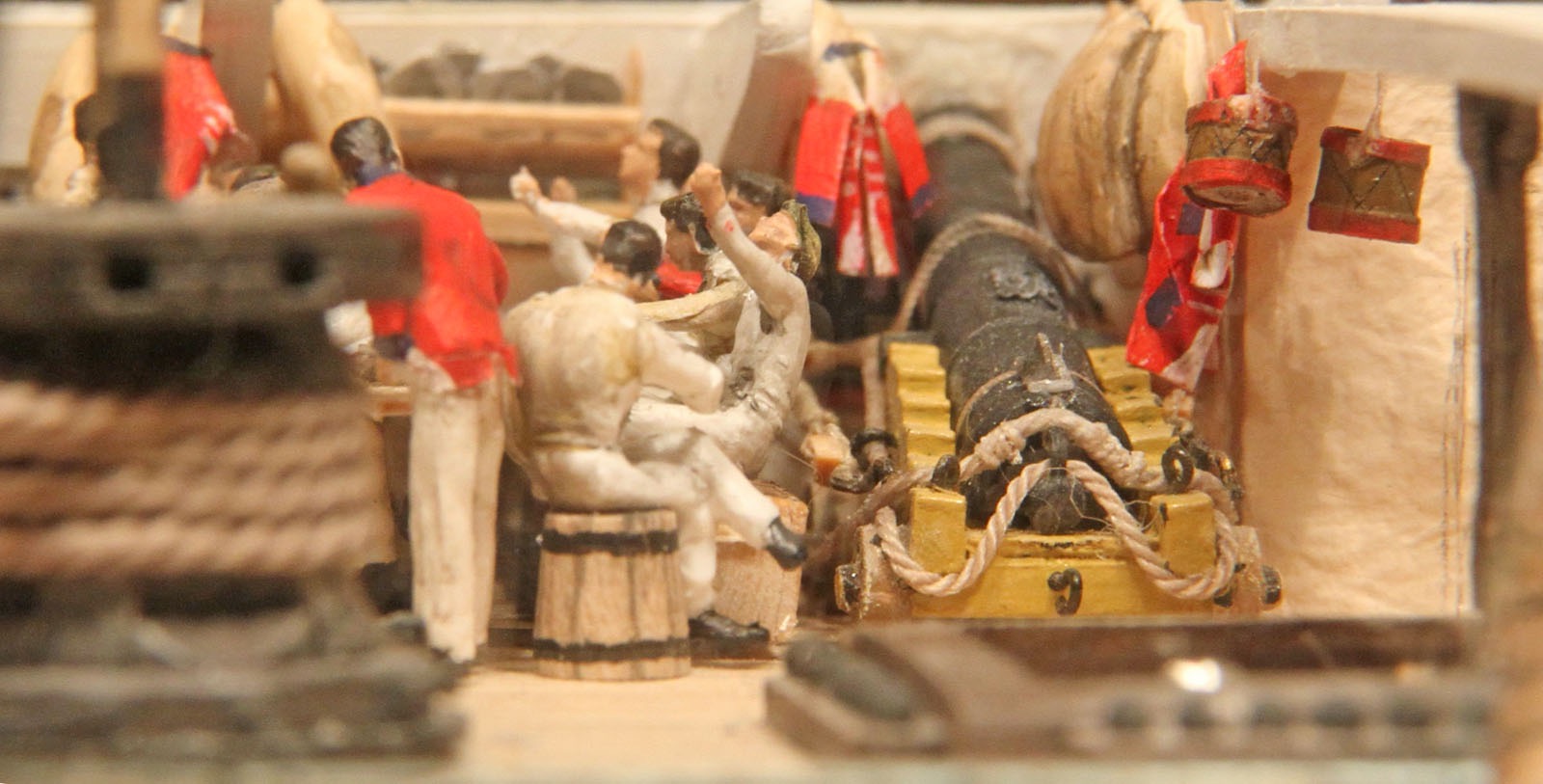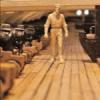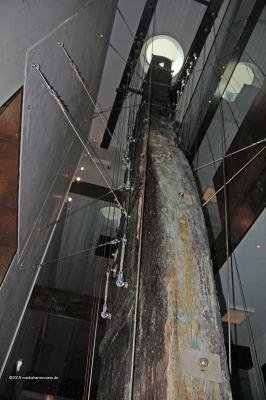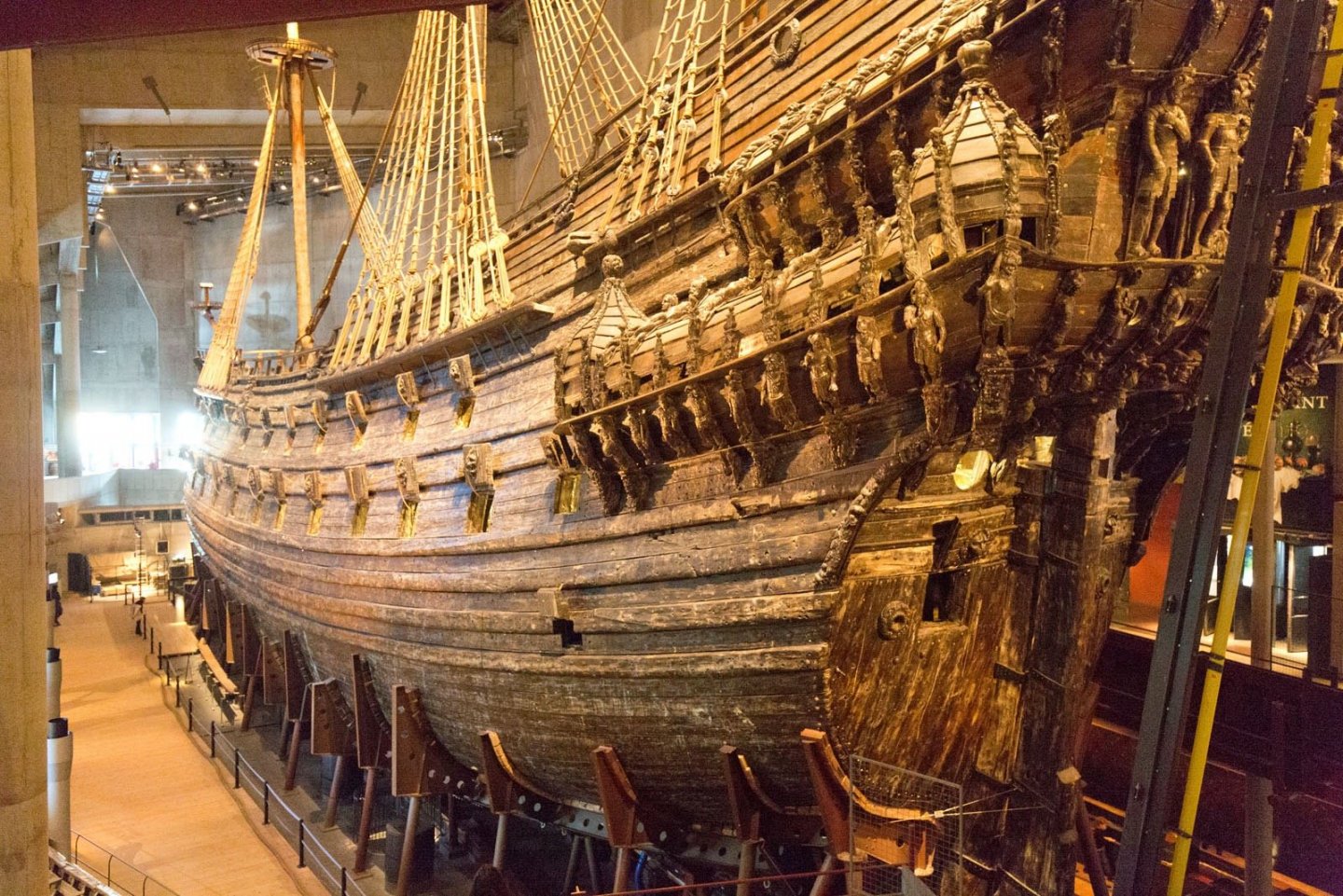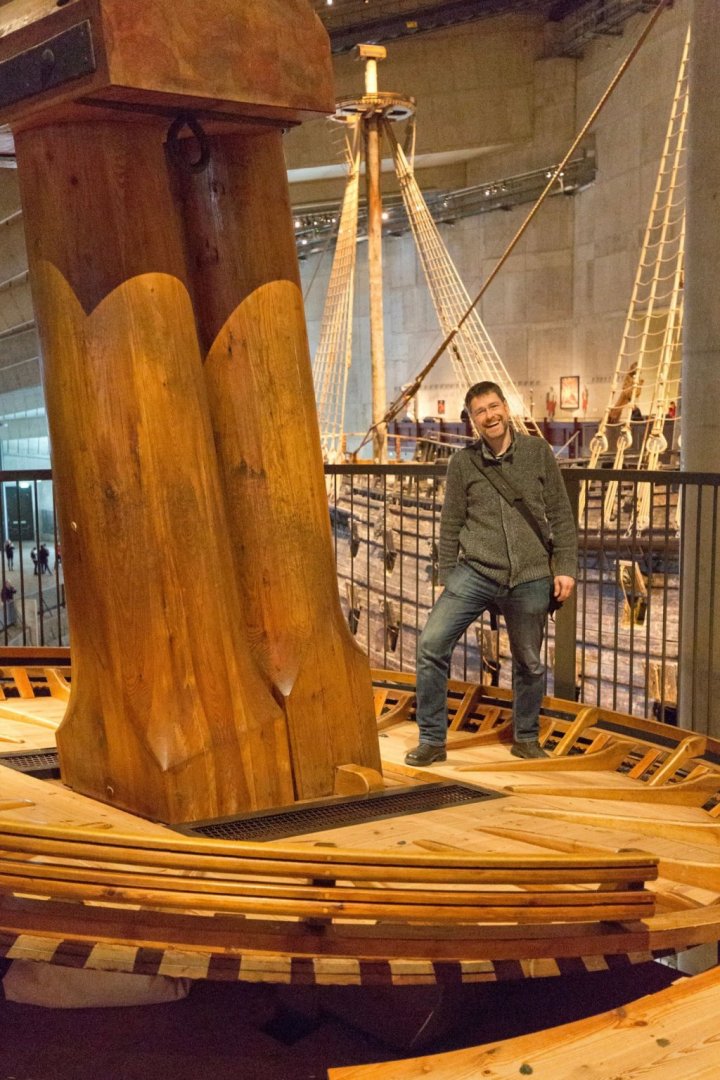-
Posts
2,417 -
Joined
-
Last visited
Content Type
Profiles
Forums
Gallery
Events
Everything posted by dafi
-
It is documented on british ships in several models and drawings/paintings. But no clue to me if used in real life or not, as other models and drawings of the same time omit it. Perhaps a fashion or test? In opposition to french ships, the english ships had rudders that were more slimmed towards the aft edge. Perhaps this had the same effect. As for my Vic of 1803 I decided not to show the groove as the contemporary rudder of the St George lost in 1811 in Thorsminde does not have one. XXXDAn https://strandingsmuseet.dk/en/a-sneak-peek-of-the-exhibition/
-
Très chique , très magnifique! XXXDAn
- 550 replies
-
- confederacy
- model shipways
-
(and 1 more)
Tagged with:
-
After the 2016-slice was rather in a ship shape Bristol fashion, I would like to go another approach for the 1805 slice. In the times when there was no RAL, Pantone or DIN color scales, I would suppose that each barrel of paint had a slightly different shade depending upon its provenance, batch or age. Also each barrel from each batch could have been given a different shade depending upon the intermix of the content or the fading stage as of sun and salt or the rust and dirt sitting on the surface. Also given the accounts that the Vic was painted several times being upon high seas, I would rather expect a nice patchwork of 50 thousand shades of yellow ochre. Yes it´s alive! And did you discover it? Even the new todays "seamon-pink-hello-kitty" can be found, yes down there, in the left bottom corner, just around the rigol 😉 Enjoy, XXXDAn
-
Don´t be too scientific about the early years of gun use. No experience yet, no calculations yet, no trained crews yet, no long range yet, just shoot if you think you can 🙂 Here is the Vasa, best example of what used too be, even if the decks were not curved as extreme as in the galleons any more: curve still quite visible. And if one think that things need to make sense the way we believe in today, have a look at the main top that is as declined that it is even difficult to stand straight! XXXDAn
-
But ok, it is time to really start the Trafalgar slice. One remembers: Te ship was recommissioned in March 1803. Possibly with the yellow and black lines, no checker yet. If ever or if when this one was applied, I found no contemporary sources. It might well be that the checker was only a post Trafalgar feature. The ship hastily sailed into the Mediterranean Sea where it stayed over winter. In April 1805 it starte it famous cruise to Sicily, Gibraltar, Caribbean Sea and back, chasing Villeneuve. On the return in August the hull was painted while being still on sea. End of August, It entered a refit in Spithead, start of September plenty of paint was delivered, a week later they were out on sea again. Possibly plenty of paint jobs were still ongoing at this moment. The stress of the voyage and the very stressful and time squeezed refit make me think, that the lovely lady possibly already looked a tad shaken already before the battle on 21.10.1805. Especially I imagine plenty on competing touches of paint ... Turners drawings show clearly the build up forecastle with its gun ports. Not to be seen the timber-heads, shown in most contemporary drawings and models. So I adapted those. Not to forget, the drawings show the ship after hasty repairs at Gibraltar, perhaps those were omitted in the reconstruction of this heavily damaged area. For the positioning of the yellow strakes I go closely with Maik´s wonderful analysis of Turners drawings. https://www.segelschiffsmodellbau.com/t7042f1475-HMS-Victory-Spurensuche.html First fitted the chain boards with lines of Apoxy Sculpt, my favorite way of doing things like that. Then searching for the color split lines with markings on tape ... ... and a first layer of yellow ochre. Not the real final shade yet, only to find the proportions. XXXDAn
-
So the guns are taken on board but much to hurried, the board of ordnance did not have the time to repaint the carriages in the new color. Have to change that still ... And now just the Trafalgar slice missing 🙂 XXXDAn
-
Nothing new from me, but a fun and good read 😉 https://www.thesun.co.uk/news/10455141/visitors-to-nelsons-hms-victory-complain-it-is-too-cramped-and-they-keep-bumping-their-heads/ XXXDAn
-
Hy druxey, even though difficult to see, this netting is already a quite dirty white just like the Vic today in P. The original 1805 version will be much more a natural hemp color 😉 XXXDAn
-
Thanx Popeye! And on we go: Fixed the hammock nettings on a cardboard and paint them white and buffy colors. Then first the short side, using paper for the netting not to get stuck on the stanchions and small wooden sticks to press the nettings down properly. Then the long side. Paper again to facilitate the insertion, then fixing the netting with superglue onto the stanchions. To have a better perceptibility I introduced some darker paper and fitted the nettings to correct size with a very pointed scissors. For the adrenaline not to go down too much, I user a lighter´s flame to get rid of some excess superglue :-0 As all parts survived the procedure, the upper holding rope was fixed and the netting glued onto it 🙂 In the meantime - using some drying time - I also fixed some ringbolts of the 1805 version on the channel boards ... ... and fixed the boards onto my slice. All the best, dafi
-
Hello Jan, no the big one is too late for that, even though I already have a reminiscence for that, get surprised ... ... in some years or so 😉 For the small 2017-slice, I adapted as far as I can judge. Even with all the help from the friends here including the color samples, the color is still quite miraculous to me, as its appearance changes a lot through the light and shades. Have to see it one day with my own eyes to be able to understand it completely. But not to let you down dear Jan, I will soon take out the wrecking ball and ELIMINATE a part that needs to be replaced, funnily one of the parts that is "original kit" - More soon. XXXDAn
-
Do not have too much time to busyness commitments. So even small things deserve a small accolade for personal encouragement. A new gun port lid ... ... and got from a comrade a wire 1,5 mm outer diameter and 0,5 mm inner diameter, so the small protection for the lid lanyards can be done more easily. And the hammock stanchions are fixed too ... ... and a little later were knocked down - of course :-0 Also the chains suffered a bit, but my experience tells me that that is easily to be done 🙂 XXXDAn
-
Soon again looking for something wrong to amuse you a bit 🙂 Until then, the rest is "done by the paint" ... XXXDAn
-
That is as one has to think differently. The problem was not water coming over, the issue was to evacuate very fast the water that managed to come over. Big risk of instability and draining inside. Graham Moore describes in his diary nicely the situation, where the carpenter managed only in last second to knock of the lids of some ports to let all the water out after a big wave came over. XXXDAn
-
Finally took the time to continue a bit. Here are the parts again, that I prepared some time ago 🙂 Still work in progress, have to clean up, apply some paint and the batten on the channel board. XXXDAn[/quote]
-
Just for clarification, Gerard Delacroix mentioned on his old vanished forum on the 14.10.2006 concerning the french guns: "Il faut déjà savoir que seuls les canons de 36 (et les rares 48) ont deux palans de recul. Tous les autres calibres n'en ont qu'un." Only the heavy 36-pounders and the more rare 48-pounders hat two training tackles. All smaller calibers only had one. All the best, Daniel @G. Delacroix
-
On the road again, meeting Viccies, seeing colors that I´ve never seen ... Adapted the color of the 2018 version a bit. Funny, like the original, it reacts very much upon the light. Looks different every time ... Fixed the board that protects the hammock cranes from underneath. 🙂 Cheers, XXXDAn
-
And one more piece finished 🙂 The material of the guns is still in discussion. Did the Vici n 1782 still have brass guns - as Bugler and McKay see as a possibility - or did she have already iron ones. As discussed before, I will keep you updated. So that was no. 2 out of four being ready now. Approx. 1780 and 1920 are done, 1805 and 2018 still to follow. Cheers, dafi
-
Made the missing lids ... ... drilled the holes for the hinge ... ... fixed with the necessary distance ... ... and put in the lanyards. The half port lids need extra distance as fort the moulding. So the hinges are quite far out. Also put in the lanyards. Coming close to the finishing line 🙂 XXXDAn
-
Thank you, this is where I got the basic idea from 🙂 But using the sprue I can choose the basic color and also can specify the ratio from internal to external diameter, as this one stays the same throughout the procedure. XXXDAn
-
Final sprint in view 🙂 Take a sprue, drill a hole and ... ... heat it up and pull 🙂 After some tries I had suitable tubes of 0,7 mmm outside and 0,3 mm inside. Alined them on 0,3 mm wire to be able to cut without smashing them by rolling under a knife. Drilled some 0,75 mm in the right angle into the ship ... ... and glue the tubes in with a wire still as handling help. Checked the angle and checked the opening with a needle, then still applied some paint nice name "rotten leather" ;-). Then fixing the halliards, to unravel the thread did not work as they were too thin ... ... so held the thread tight onto a round edge and usied a sharpened needle in the right angle. Works rather easy ... ... prepared the ringbolt ... ... threaded the bold and lead the free part of the thread through the eye of the needle, pulled ... ... and a second go for the splice, some glue and - DONE !!! The port lids are waiting already 🙂 XXXDAn
-
Hello Christian, I am following the contemporary model of 1765and this is how it is done there. I had a fast look onto other models, there much more often the fake frieze was even omitted, leaving a wooden square in the colored ground ... XXXDAn
-
Once the irons being fixed one can see the difference in V1 to the actual version. As the first build just developed without further planing, it was not possible to fix all the irons properly as for the ports, so it was good to have a fall back version and to start anew 🙂 An after all this fiddling with the small tiny chain links it was good to fix something bigger in a decent size ... ... the port for the main tack, the batten for the channel board being fixed, some ringbolts to straighten the shrouds and the missing port lids ... ... splashed some paint ... ... the side half door lids with the painted frieze ... ... and the very elegant conduct of the lifting halliard of the foremost gun port lid 🙂 XXXDAn
-
Thank you druxey. I am with you. But I wonder about the sources of Bugler and McKay. At least the Vic of 1737 was not found yet at the date of the release of their books, so less confusion then. XXXDAn
-
Hello druxey and Gary, thank you for the input, always important to have this kind of questions and corrections. I was going through a lot of my sources lately and found the same kind of statement like Bugler´s at AOTS McKay, that made me believe some years ago, that the brass cannons were used on the Vic until this date. But he is even more vague about it. Now reading it more aware-fully, he also could have expressed that in general all the brass guns were replaced by the 1790ies. On the other hand he states that it is possible that before 1782 the Vic still had brass guns, without specifying if all of the guns or only the larger calibers. As McKay is largely based on Bugler, I would strongly guess, that he based his opinion upon Bugler´s book. I also remember a newer input after the discovery of the 1737 Victory, that this ship was the last major ship being fitted with an all brass ordnance. Did not locate the source again yet, but also do believe that this was in a video or news section, and do not know the quality of the sources that this statement was based on. All my other sources so far do not give a statement upon the gun´s material prior to 1782/1788. Cheers, Daniel
About us
Modelshipworld - Advancing Ship Modeling through Research
SSL Secured
Your security is important for us so this Website is SSL-Secured
NRG Mailing Address
Nautical Research Guild
237 South Lincoln Street
Westmont IL, 60559-1917
Model Ship World ® and the MSW logo are Registered Trademarks, and belong to the Nautical Research Guild (United States Patent and Trademark Office: No. 6,929,264 & No. 6,929,274, registered Dec. 20, 2022)
Helpful Links
About the NRG
If you enjoy building ship models that are historically accurate as well as beautiful, then The Nautical Research Guild (NRG) is just right for you.
The Guild is a non-profit educational organization whose mission is to “Advance Ship Modeling Through Research”. We provide support to our members in their efforts to raise the quality of their model ships.
The Nautical Research Guild has published our world-renowned quarterly magazine, The Nautical Research Journal, since 1955. The pages of the Journal are full of articles by accomplished ship modelers who show you how they create those exquisite details on their models, and by maritime historians who show you the correct details to build. The Journal is available in both print and digital editions. Go to the NRG web site (www.thenrg.org) to download a complimentary digital copy of the Journal. The NRG also publishes plan sets, books and compilations of back issues of the Journal and the former Ships in Scale and Model Ship Builder magazines.

